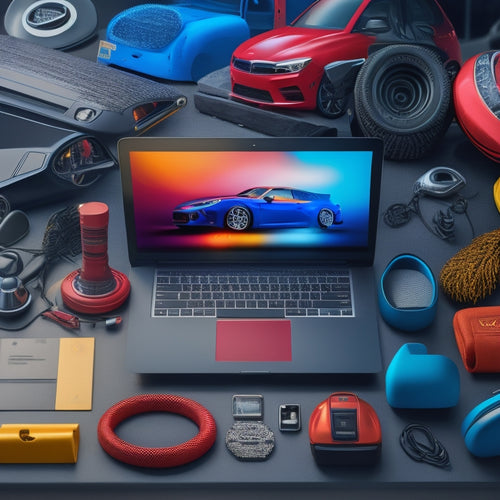
California Homeowners' Guide to Affordable Panel Installation
Share
As a California homeowner, you're likely aware that investing in solar panels can greatly reduce your energy bills and carbon footprint, but the cost of installation can be a notable barrier, with prices ranging from $15,000 to $30,000 or more, depending on the size and complexity of your system. To make solar energy more accessible, consider solar financing options, factor in high-quality panels for durability, and look for experienced installers who can guide you through the process. By understanding the factors that affect installation prices and taking advantage of residential incentives, you can make affordable, informed decisions about your solar panel installation – and discover more ways to make solar energy a smart investment for your home.
Key Takeaways
• California homeowners can expect to pay $15,000 to $30,000 or more for solar panel installation, depending on equipment and installation costs.
• High-quality panels and experienced installers are crucial for durability and efficient installation, despite higher upfront costs.
• Solar financing options, federal tax credits, and state rebates can help make installation more affordable for California homeowners.
• Energy Efficiency upgrades can reduce energy consumption, allowing for a smaller solar panel system and lower upfront costs.
• Green Financing options with flexible repayment terms and low-interest rates can help California homeowners save money on solar installation.
California Solar Panel Costs Breakdown
Your total California solar panel costs typically include the expenses of the equipment, installation, and permits, which can range from $15,000 to $30,000 or more, depending on the size of your system and local market conditions.
Don't let that sticker shock scare you off, though - with the right solar financing options, going green can be more accessible than you think.
You'll want to factor in the cost of high-quality panels that can withstand the Golden State's sunny weather. Look for manufacturers that put their products through rigorous panel durability tests, such as hail and wind resistance assessments.
A reputable installer will be able to guide you through the process, from selecting the right equipment to handling permits and installation.
With the right combination of affordable financing and premium equipment, you can start harnessing California's abundant sunshine to power your home - and your savings account.
Factors Affecting Installation Prices
Multiple factors, including the type and quality of equipment, system size, and installation complexity, can greatly impact the final installation price of your California solar panel system. As a homeowner, it's important to understand these factors to get the best deal.
Here are three key factors that can affect your installation price:
-
Labor Costs: The cost of hiring and training a team of skilled installers can vary depending on the company and location.
-
Roof Complexity: If your roof has multiple levels, skylights, or other obstacles, installation may require more time and labor, increasing the overall cost.
-
Local Regulations and Weather Conditions: Compliance with local building codes, permits, and inspections can add to the cost. Additionally, weather conditions like high winds or extreme temperatures may require specialized equipment, further increasing the price.
Keep in mind that these factors can interact with each other, so it's important to work with an experienced installer who can navigate these complexities and provide a tailored solution for your California home.
Average Cost of Solar Panels
On average, a California homeowner can expect to pay between $15,000 and $30,000 for a standard solar panel system, depending on the system size and quality of equipment. This upfront cost may seem challenging, but with the right solar financing options, you can break it down into manageable chunks.
For instance, you can explore financing plans that allow you to pay for your system over time, reducing the initial financial burden. Additionally, consider the energy storage benefits that come with investing in a solar panel system.
With a battery storage system, you can store excess energy generated during the day for use during the night or on cloudy days, reducing your reliance on the grid and saving you even more money in the long run. By factoring in these benefits, you'll find that the cost of solar panels is well worth the investment.
Residential Solar Incentives California
California's generous incentives for residential solar installations can greatly reduce the upfront cost of going solar, making it more accessible and affordable for homeowners like you. As a California homeowner, you're in luck! With the state's sunny climate and eco-friendly vibes, going solar is a no-brainer. But what really sweetens the deal are the incentives that can help offset the initial investment.
Here are three key incentives you won't want to miss:
-
Federal Tax Credit: You can claim a tax credit of 26% of your total solar panel installation cost, which can be a significant chunk of change.
-
State Rebates: California offers rebates through the California Public Utilities Commission (CPUC) Self-Generation Incentive Program (SGIP) for residential solar installations.
-
Net Metering: You can sell excess energy back to the grid and offset your energy bills, reducing your overall energy costs.
Saving Money on Solar Installation
You can further reduce the upfront cost of solar installation by taking advantage of cost-saving strategies that won't compromise the quality of your solar panel system. One way to do this is by leveraging Energy Efficiency upgrades to increase your home's energy efficiency. By reducing your energy consumption, you'll need a smaller solar panel system, which translates to lower installation costs.
Additionally, consider exploring Green Financing options, which can provide flexible repayment terms and low-interest rates. This can help spread the cost of installation over time, making it more manageable for your budget. By combining these strategies, you can enjoy significant savings without sacrificing the quality of your solar panel system.
Plus, with the added benefits of renewable energy and increased property value, going solar has never been more affordable. So, don't let upfront costs hold you back – explore these cost-saving strategies and start harnessing the power of solar energy today!
Frequently Asked Questions
Can I Install Solar Panels on a Rented Property?
As a renter, you can install solar panels, but don't forget to get your landlord's permission first, as it is crucial to negotiate a mutually beneficial agreement respecting both parties' rights and interests.
How Do I Ensure My Solar Panels Are Bird Poop Resistant?
To keep your solar panels bird poop resistant, you should explore applying Bird Friendly Coatings or investing in panels with Panel Self Cleaning technology - both solutions will save you from a mess of avian proportions!
Do Solar Panels Work During a Power Outage?
During a power outage, your solar panels won't provide electricity unless you have a grid backup system with energy storage, like batteries, allowing you to harness the sun's power when you need it most.
Can I Use Solar Panels to Charge My Electric Vehicle?
You can use solar panels to charge your electric vehicle, taking advantage of Vehicle Incentives, and installing a dedicated Charging Station to optimize energy flow, making it a smart, eco-friendly move!
Are Solar Panels Compatible With My Tile Roof?
'You're wondering if solar panels will mesh with your tile roof? Good news: modern flashing systems guarantee a watertight seal on various roof materials, including tile, so your roof's good to go for solar!'
Related Posts
-

5 Essential Tips for Buying EV Charging Systems Online
When purchasing an EV charging system online, you'll want to make sure you're making an informed decision. First, det...
-

Top 10 Tips for Buying Car Accessories Online
When purchasing car accessories online, you should take proactive steps to avoid low-quality or incompatible products...
-

Top Online Stores for Solar Car Accessories
When searching online for solar car accessories, you'll find top retailers like Amazon, REI Co-op, and Best Buy offer...


